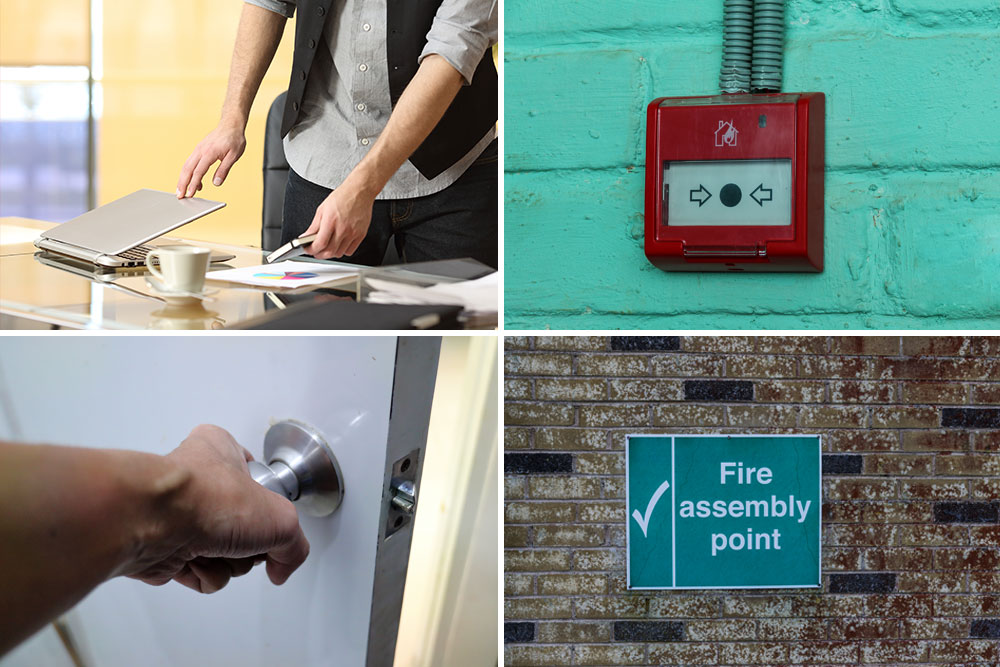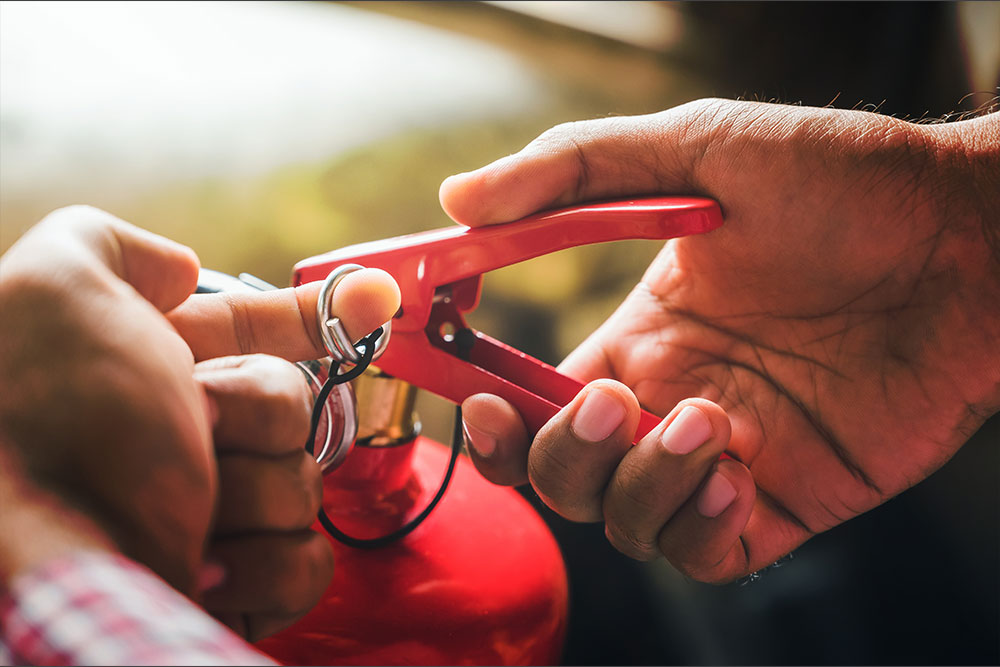
If a fire broke out at your work, how confident are you that your colleagues would know what to do? Would they stay calm and collected and get themselves and others out safely? Or would they panic? The RACE fire safety protocol is a tried-and-true way to keep cool during a fire.
Fires can do a tremendous amount of damage in very little time. A fire can go from a small flame to a roaring inferno in minutes. There’s a genuine risk that people can be injured or lose their lives.
This is why many organisations are now training their staff on what is known as the RACE fire safety protocol, which can be so important. It’s now widely accepted by organisations and businesses across the globe as an integral part of workplace fire safety.
What Does the RACE Acronym Stand For?
An emergency like a fire can be terrifying. People must maintain their composure. A structured and systematic approach to what to do during a fire can ensure everyone stays calm and gets out safely. That’s what RACE fire safety sets out to do.
The RACE acronym stands for:
- Remove/Rescue
- Alarm/Alert
- Confine/Contain
- Extinguish/Evacuate
The RACE acronym makes it easier to remember best practices during a fire. RACE provides a set of responses that give you a systematic, effective protocol to follow if a fire breaks out. It’s crucial for someone with dedicated fire warden duties to know the RACE fire safety system – it’s also invaluable knowledge for everybody else.
The RACE fire safety protocol was developed by a series of international fire safety experts over several years. These days, RACE fire safety is recognised as the standard protocol used in fire safety and emergency response training.
Let’s look at what each of the letters in the RACE acronym stands for:

R: Remove/Rescue
When a fire breaks out, the first thing to do is to get people to a safe area. If you’ve become aware of a fire, you should immediately stop whatever you’re doing and start helping anyone in harm’s way to get to safety.
Your organisation or business should already have a fire evacuation plan in place. Ideally, there should be infographics to illustrate the evacuation route. Everyone should have already had training sessions to acquaint themselves with the route.
Don’t try and fight the fire. First, make sure that everyone knows how to escape the building and is starting to evacuate in a calm and orderly manner.

A: Alarm/Alert
Once people are evacuating, sound the fire alarm and alert the authorities, if possible. But it’s not always possible to get to a fire alarm during a blaze. If you can’t reach a fire alarm immediately, alert the authorities by calling 999 once you’ve reached safety.
C: Confine/Contain
If you get a chance, and only if it is safe, take measures to confine or contain the fire in one place. This means closing all doors and windows in the room. As you evacuate, close all fire doors, doors and windows behind you to stop a fire from spreading quickly. But – always remember not to do so if this will block someone else’s exit or put you at risk.
E: Extinguish/Evacuate
If the fire isn’t already out of control and is only small, you can try to extinguish it yourself.
This should only be attempted by staff with fire safety training and the know-how to use a fire extinguisher. Also, extinguishing the fire should only be tried if you can reach an extinguisher without putting yourself at risk. If you can’t, or the blaze is too large to put out alone, evacuate the building immediately.
When using a fire extinguisher, make sure you follow the PASS technique. The PASS technique is another handy health and safety acronym explaining how to properly operate a fire extinguisher.
PASS stands for:
- Pull
- Aim
- Squeeze
- Sweep
Ensure you’re using the correct fire extinguisher for the fire you’re fighting. Otherwise, you might make things worse and put yourself at even more risk.

Implementing RACE in Your Organisation
Here’s how to implement RACE and help prepare your workplace for an emergency:
1. Provide Fire Safety Training
Provide regular fire safety training that covers how to handle fire extinguishers and evacuate safely. Training should be refreshed at least once a year.
2. Develop an Evacuation Plan
Ensure employees are aware of evacuation plans, including:
- Escape routes
- Emergency exits
- Assembly points
Evacuation plans should be displayed in key areas in larger workplaces or workplaces open to the public.
3. Conduct Fire Drills
Conduct at least two fire drills per year to test your evacuation plans and give employees an opportunity to practise them under safe conditions.
4. Assign Fire Wardens
Appoint staff members as fire wardens to lead evacuations, support others and operate extinguishers safely. Fire wardens must be given adequate training to fulfill their duties.
5. Maintain Your Fire Safety Equipment
Arrange for regular inspections and servicing of your fire doors, extinguishers, alarms and emergency lighting systems. Inspections and maintenance must be carried out by trained, competent personnel.
Fire wardens should also regularly check that fire doors and escape routes are unobstructed.
The Importance of RACE Fire Safety Training
You might think workplace fires don’t happen daily, so you can afford to be lax about your fire safety protocols. This, unfortunately, just isn’t the case.
Fire experts estimate more than 22,000 workplace-related fires happen in the UK every year. And the cost of fire to the UK economy per year has been put at a whopping £12 billion.
It’s not just the amount of money that’s a concern. In 2021-22, fires in the UK claimed the lives of 273 people. That figure went down slightly in 2022-23 to 259 fire-related fatalities.
The truth is that many fires and fire-related injuries and deaths could have been avoided if people had proper training and equipment.
If you’re an employer, you are responsible under the Regulatory Reform (Fire Safety) Order 2005 to ensure your workplace is fire-safe. You also must provide your people with fire safety training.
Where to Find Accredited Fire Safety Training
There’s no need to get hot under the collar about where to find fire safety training, though. We have a range of Fire Safety Courses that provide people with the necessary skills.
These courses will ensure your workplace stays within the law and that your people know what to do if a fire breaks out. Completing these courses is the best way for your staff to protect themselves and the business.
All courses can be taken in segments online whenever you like. They’re assured by leading health and safety authorities and are recognised by industry and government bodies.


















































































































































































































































































































































































































































































































































































































































































































































